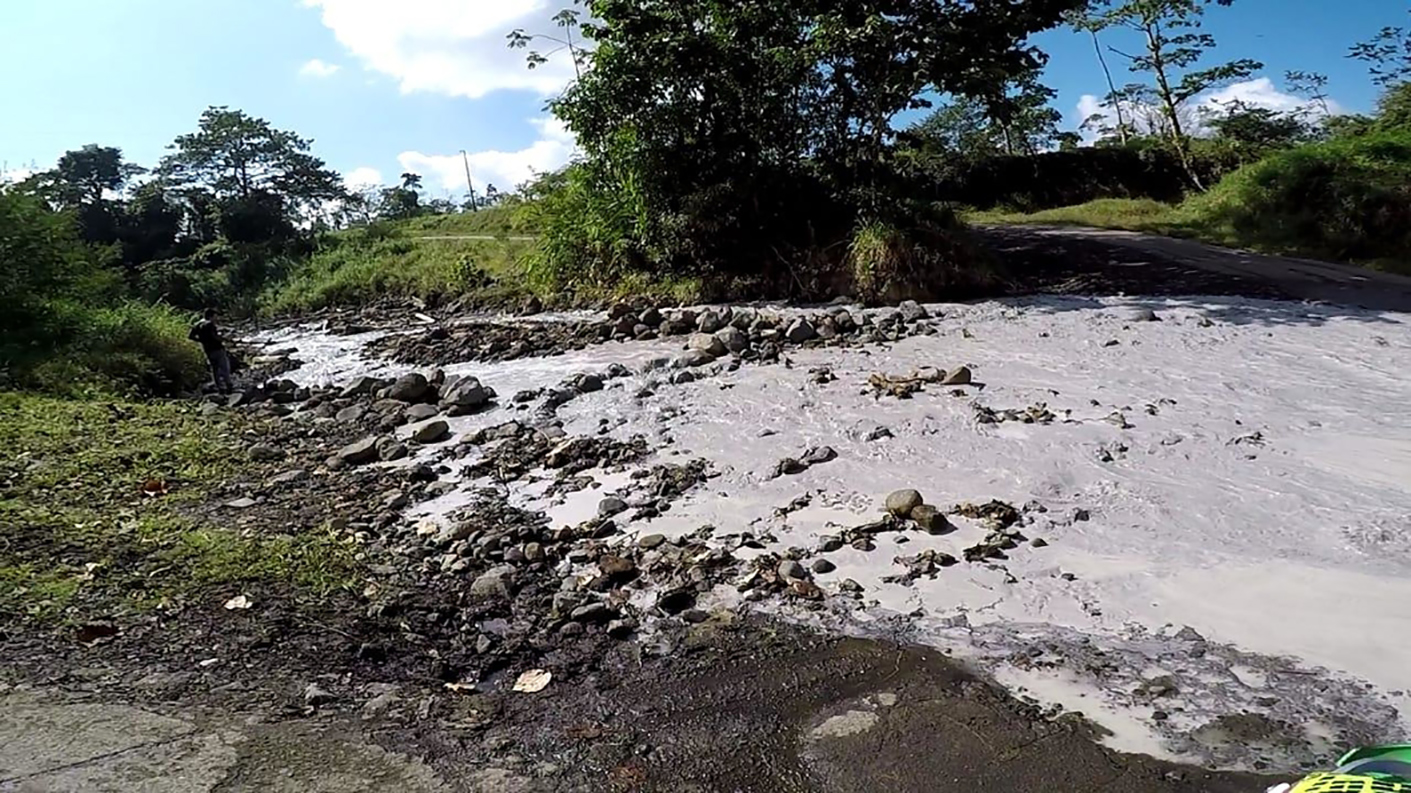Report on Rincon de la Vieja (Costa Rica) — April 2020
Bulletin of the Global Volcanism Network, vol. 45, no. 4 (April 2020)
Managing Editor: Edward Venzke.
Edited by Kadie L. Bennis. Research and preparation by Paul Berger.
Rincon de la Vieja (Costa Rica) Weak phreatic explosions during August 2019-March 2020; ash and lahars reported in late January
Please cite this report as:
Global Volcanism Program, 2020. Report on Rincon de la Vieja (Costa Rica) (Bennis, K.L., and Venzke, E., eds.). Bulletin of the Global Volcanism Network, 45:4. Smithsonian Institution. https://doi.org/10.5479/si.GVP.BGVN202004-345020
Rincon de la Vieja
Costa Rica
10.83°N, 85.324°W; summit elev. 1916 m
All times are local (unless otherwise noted)
Rincón de la Vieja is a remote volcanic complex in Costa Rica containing an acid lake that has regularly generated weak phreatic explosions since 2011 (BGVN 44:08). The most recent eruptive period occurred during late March-early June 2019, primarily consisting of small phreatic explosions, minor deposits on the N crater rim, and gas-and-steam emissions. The report period of August 2019-March 2020 was characterized by similar activity, including small phreatic explosions, gas-and-steam plumes, ash and lake sediment ejecta, and volcanic tremors. The most significant activity during this time occurred on 30 January, where a phreatic explosion ejected ash and lake sediment above the crater rim, resulting in a pyroclastic flow which gradually turned into a lahar. Information for this reporting period of August 2019-March 2020 comes from the Observatorio Vulcanologico Sismologica de Costa Rica-Universidad Nacional (OVSICORI-UNA) using weekly bulletins.
According to OVSICORI-UNA, a small hydrothermal eruption was recorded on 1 August 2019. The seismicity was low with a few long period (LP) earthquakes around 1 August and intermittent background tremor. No explosions or emissions were reported through 11 September; seismicity remained low with an occasional LP earthquake and discontinuous tremor. The summit’s extension that has been recorded since the beginning of June stopped, and no significant deformation was observed in August.
Starting again in September 2019 and continuing intermittently through the reporting period, some deformation was observed at the base of the volcano as well as near the summit, according to OVSICORI-UNA. On 12 September an eruption occurred that was followed by volcanic tremors that continued through 15 September. In addition to these tremors, vigorous sustained gas-and-steam plumes were observed. The 16 September weekly bulletin did not describe any ejecta produced as a result of this event.
During 1-3 October small phreatic eruptions were accompanied by volcanic tremors that had decreased by 5 October. In November, volcanism and seismicity were relatively low and stable; few LP earthquakes were reported. This period of low activity remained through December. At the end of November, horizontal extension was observed at the summit, which continued through the first half of January.
Small phreatic eruptions were recorded on 2, 28, and 29 January 2020, with an increase in seismicity occurring on 27 January. On 30 January at 1213 a phreatic explosion produced a gas column that rose 1,500-2,000 m above the crater, with ash and lake sediment ejected up to 100 m above the crater. A news article posted by the Universidad de Costa Rica (UCR) noted that this explosion generated pyroclastic flows that traveled down the N flank for more than 2 km from the crater. As the pyroclastic flows moved through tributary channels, lahars were generated in the Pénjamo river, Zanjonuda gorge, and Azufrosa, traveling N for 4-10 km and passing through Buenos Aires de Upala (figure 29). Seismicity after this event decreased, though there were still some intermittent tremors.
 |
Figure 29. Photo of a lahar generated from the 30 January 2020 eruption at Rincon de la Vieja. Photo taken by Mauricio Gutiérrez, courtesy of UCR. |
On 17, 24, and 25 February and 11, 17, 19, 21, and 23 March, small phreatic eruptions were detected, according to OVSICORI-UNA. Geodetic measurements observed deformation consisting of horizontal extension and inflation near the summit in February-March. By the week of 30 March, the weekly bulletin reported 2-3 small eruptions accompanied by volcanic tremors occurred daily during most days of the week. None of these eruptions produced solid ejecta, pyroclastic flows, or lahars, according to the weekly OVSICORI-UNA bulletins during February-March 2020.
Geological Summary. Rincón de la Vieja, the largest volcano in NW Costa Rica, is a remote volcanic complex in the Guanacaste Range. The volcano consists of an elongated, arcuate NW-SE-trending ridge constructed within the 15-km-wide early Pleistocene Guachipelín caldera, whose rim is exposed on the south side. Sometimes known as the "Colossus of Guanacaste," it has an estimated volume of 130 km3 and contains at least nine major eruptive centers. Activity has migrated to the SE, where the youngest-looking craters are located. The twin cone of Santa María volcano, the highest peak of the complex, is located at the eastern end of a smaller, 5-km-wide caldera and has a 500-m-wide crater. A Plinian eruption producing the 0.25 km3 Río Blanca tephra about 3,500 years ago was the last major magmatic eruption. All subsequent eruptions, including numerous historical eruptions possibly dating back to the 16th century, have been from the prominent active crater containing a 500-m-wide acid lake located ENE of Von Seebach crater.
Information Contacts: Observatorio Vulcanologico Sismologica de Costa Rica-Universidad Nacional (OVSICORI-UNA), Apartado 86-3000, Heredia, Costa Rica (URL: http://www.ovsicori.una.ac.cr/, https://www.facebook.com/OVSICORI/); Luis Enrique Brenes Portuguéz, University of Costa Rica, Ciudad Universitaria Rodrigo Facio Brenes, San José, San Pedro, Costa Rica (URL: https://www.ucr.ac.cr/noticias/2020/01/30/actividad-del-volcan-rincon-de-la-vieja-es-normal-segun-experto.html).

